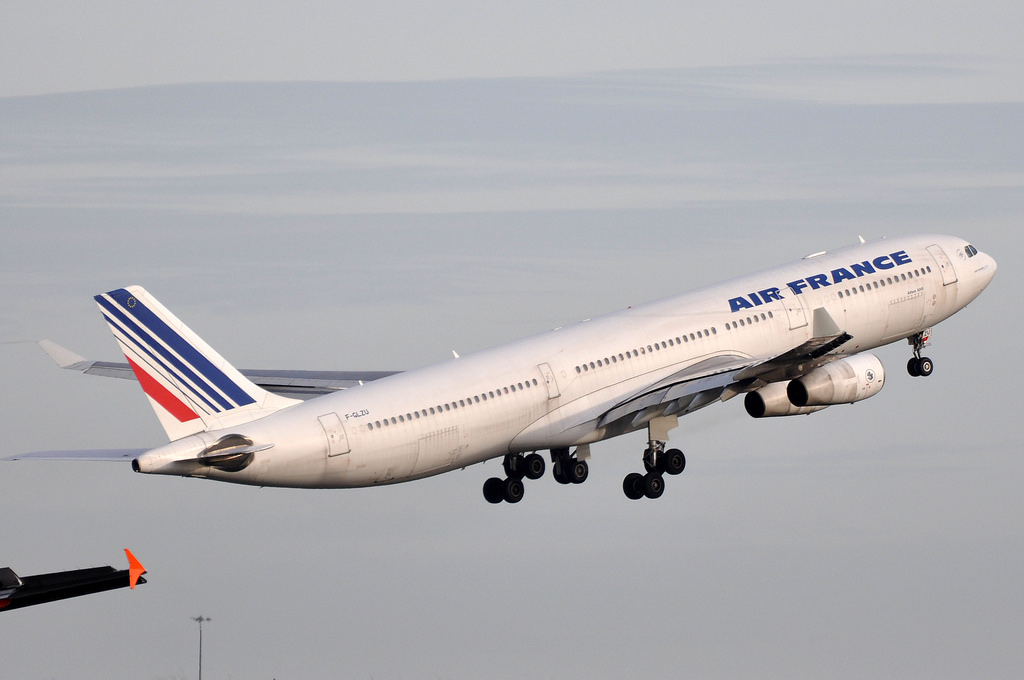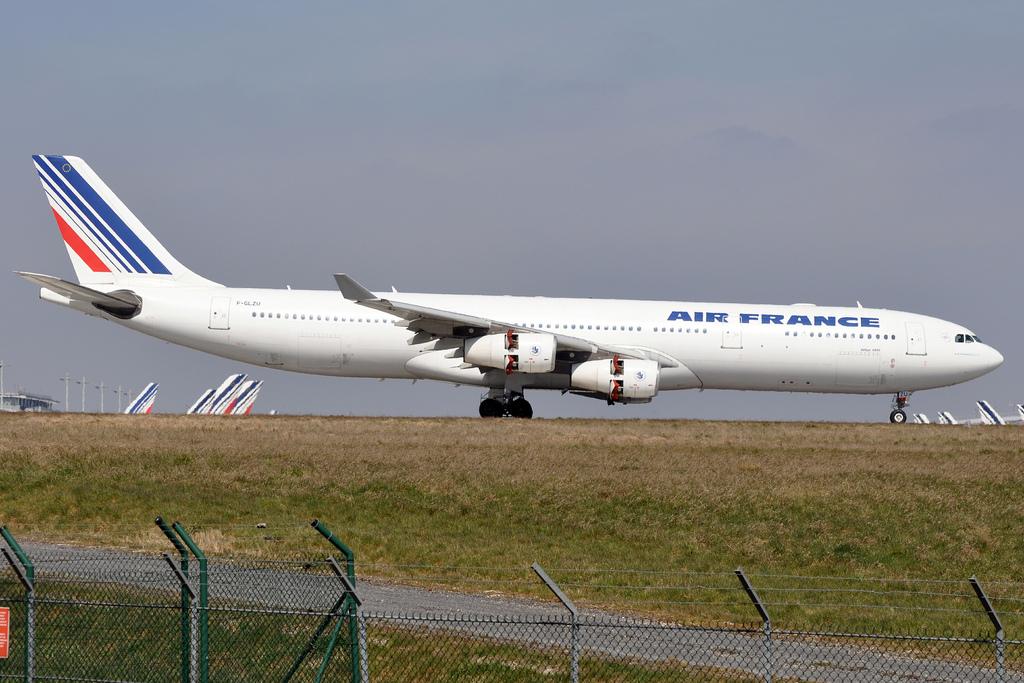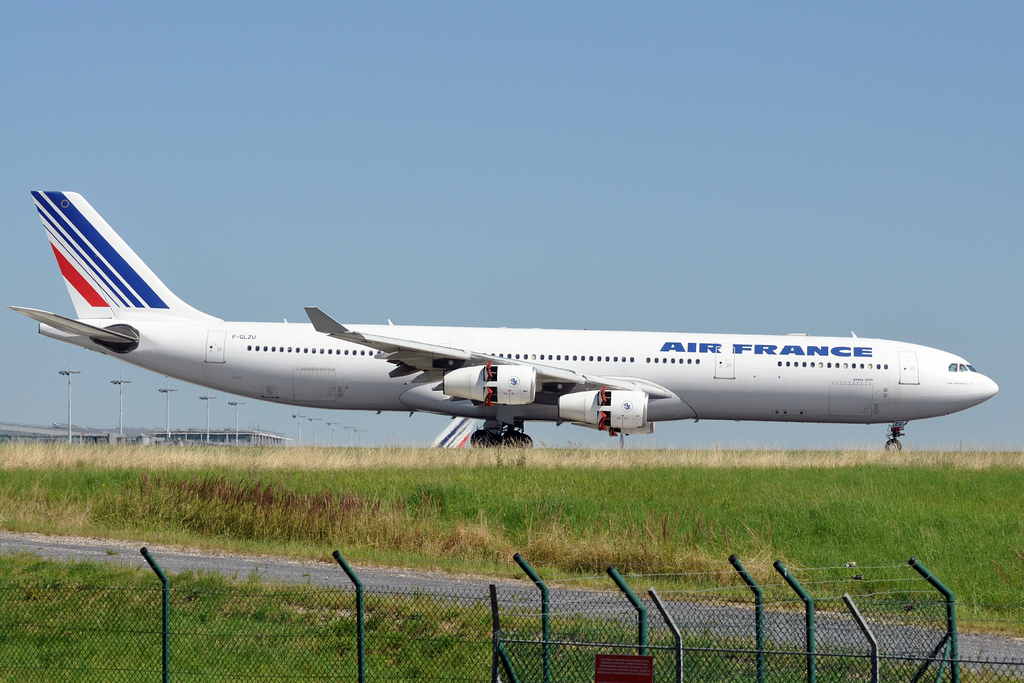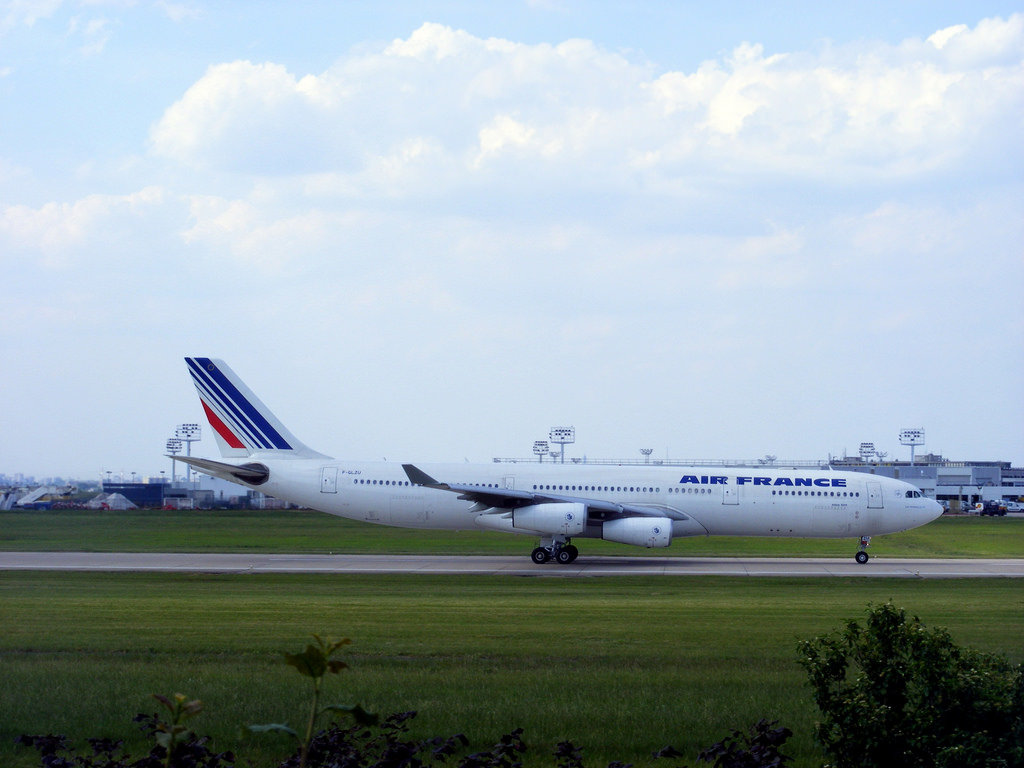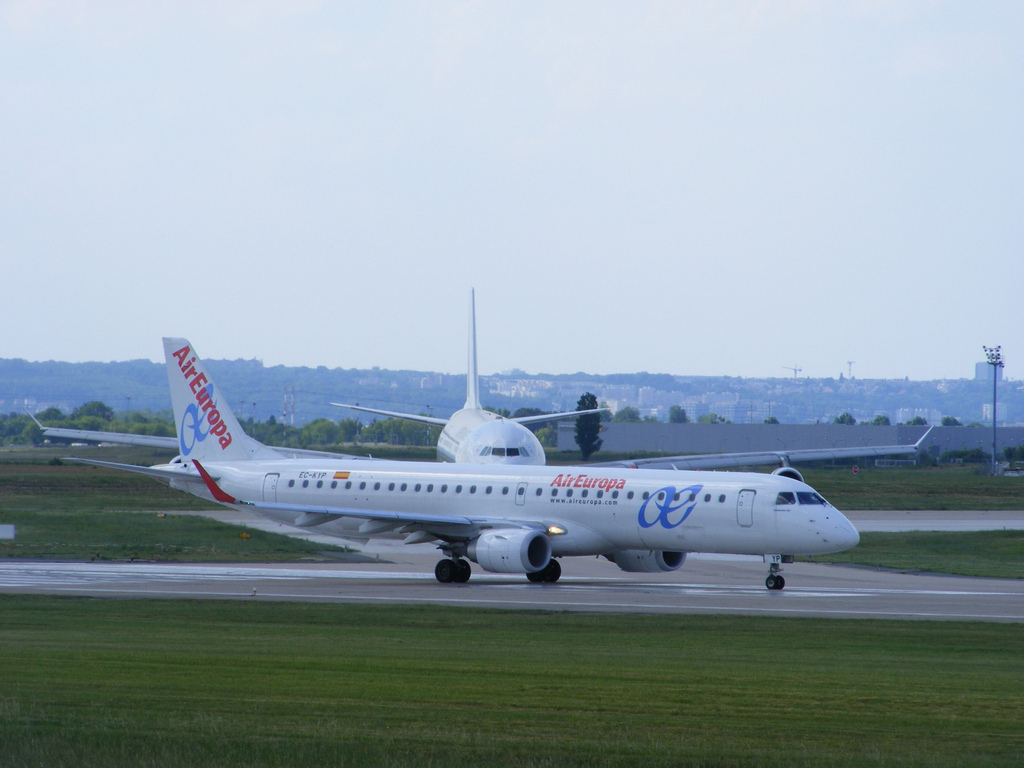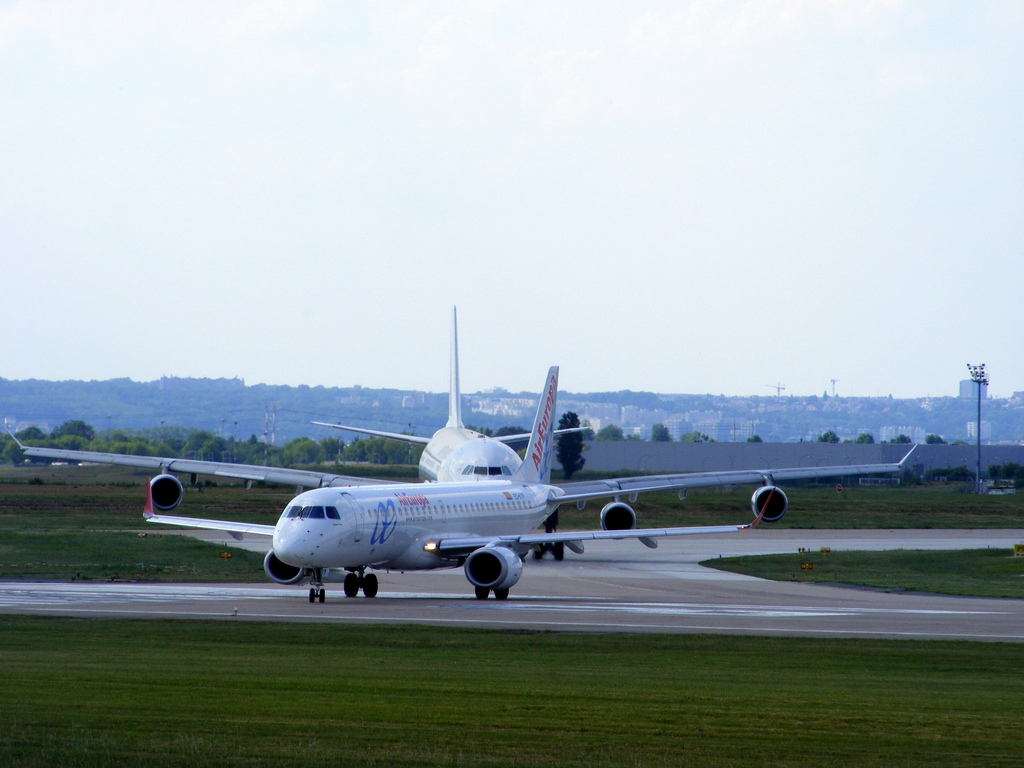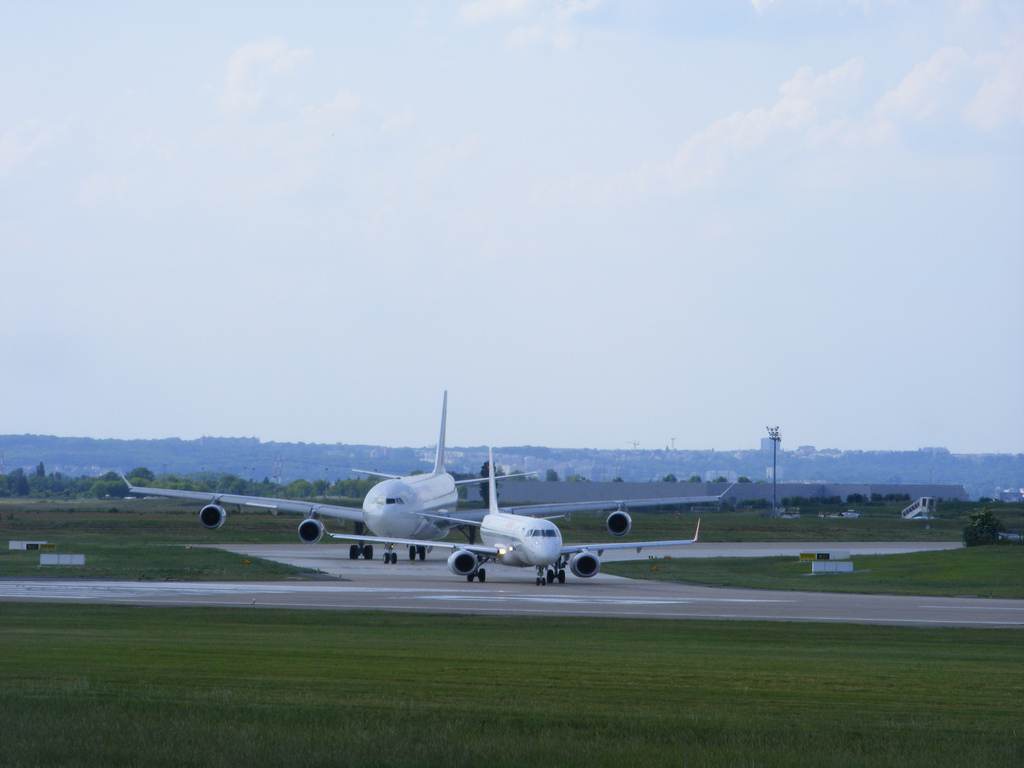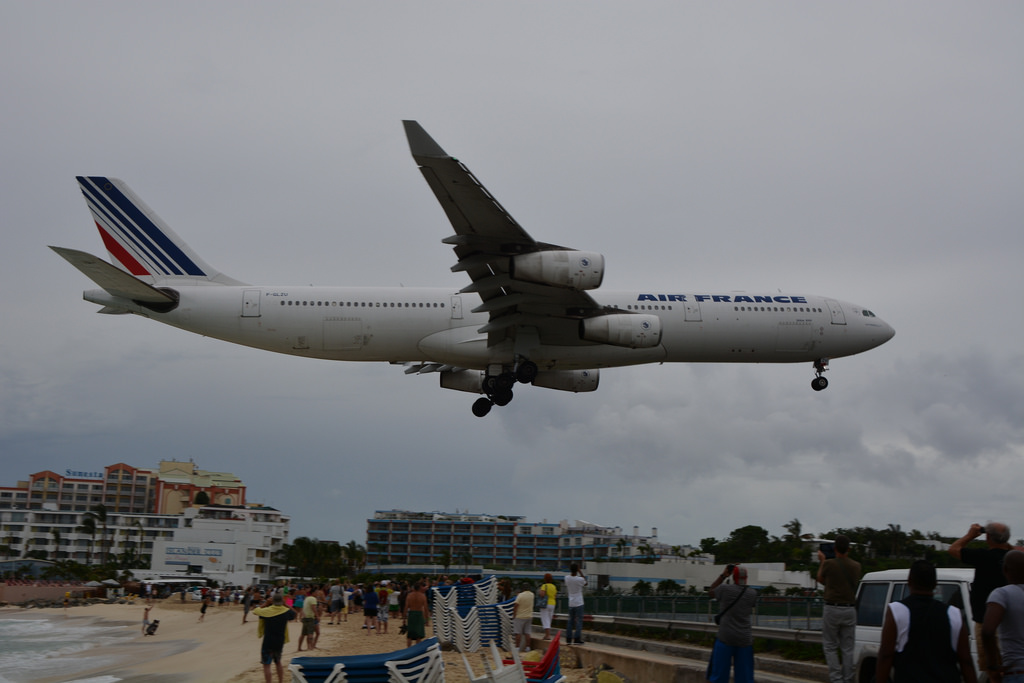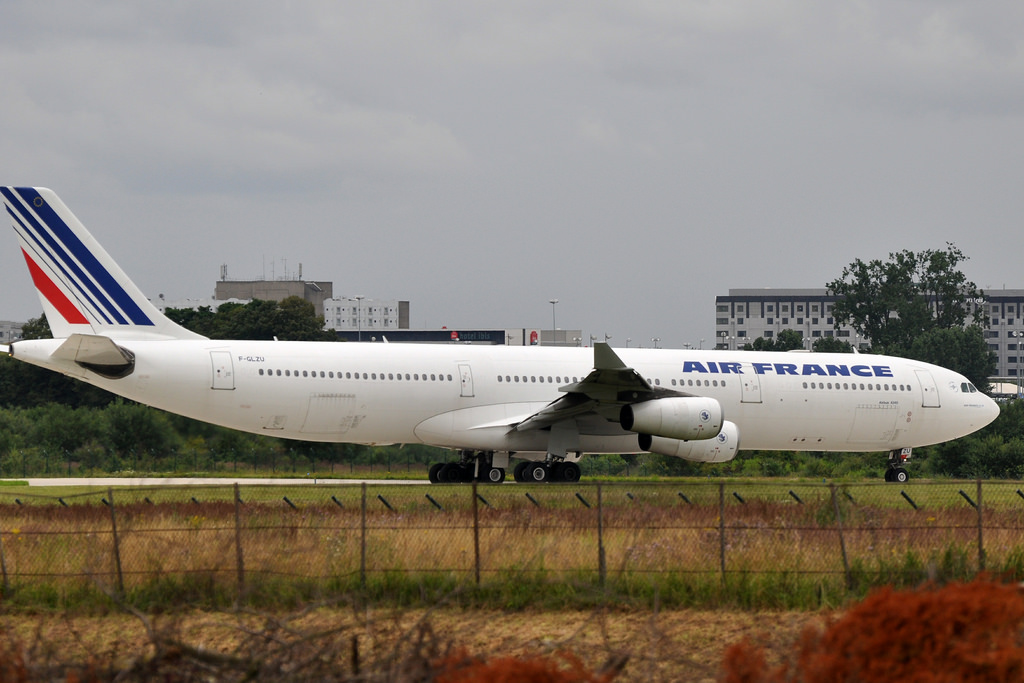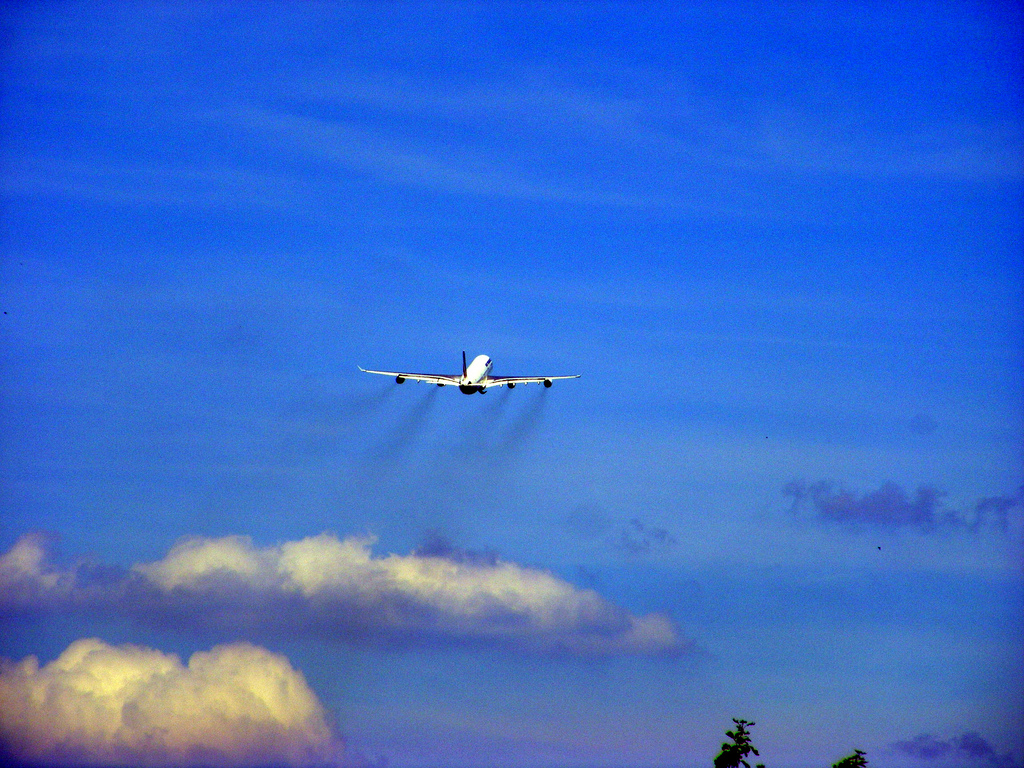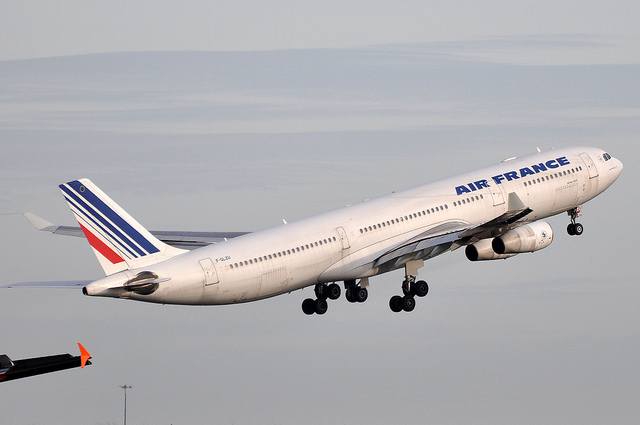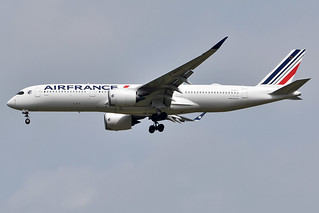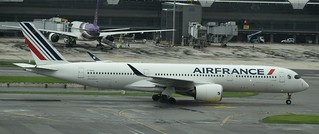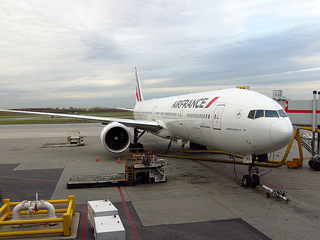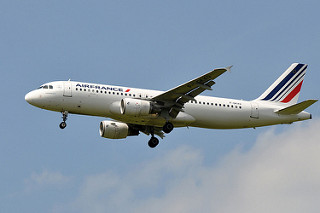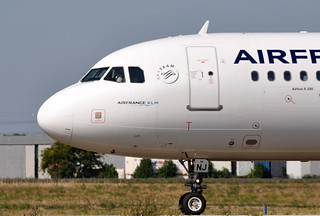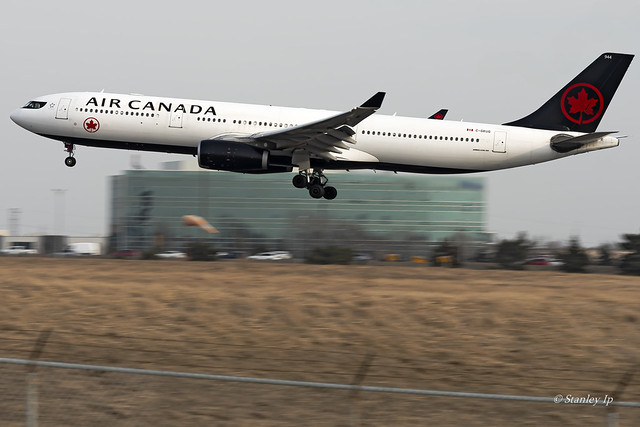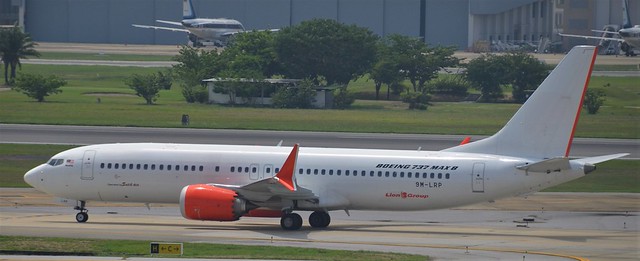France A343 at Bogota on Mar 11th 2017, abnormally long takeoff run
Last Update: July 23, 2019 / 18:27:47 GMT/Zulu time
Incident Facts
Date of incident
Mar 11, 2017
Classification
Incident
Airline
Air France
Flight number
AF-423
Departure
Bogota, Colombia
Destination
Paris Charles de Gaulle, France
Aircraft Registration
F-GLZU
Aircraft Type
Airbus A340-300
ICAO Type Designator
A343
Airport ICAO Code
SKBO
On Apr 25th 2017 the BEA reported that the aircraft needed an abnormally long takeoff run. The occurrence was rated a serious incident and is being investigated by the BEA having been delegated the investigation by Colombia's GRIAA.
According to preliminary information the aircraft crossed the runway end at about 5 feet above ground instead of 35 feet AGL.
The airline reported a similiar occurrence happened also on Apr 4th 2017 to the same aircraft. As an immediate safety action the airline reduced the maximum takeoff weight permitted for Bogota by 5 to 8 tons, either less cargo or less fuel perhaps requiring a fuel stop at Guadeloupe as suitable. It is being considered to use the Boeing 787 in the future should the A340-300 available performance turn out as the cause.
On Jun 19th 2017 Germany's BFU reported in their March Bulletin that the BFU joined the investigation on request by the BEA. During the takeoff run a retarded rotation occurred which caused the aircraft to remain below required safety heights.
On Nov 27th 2017 the European Aviation Safety Agency (EASA) released Safety Information Bulletin (SIB) 2017-20 stating:
The intent of this SIB is to raise awareness about a safety issue identified during an on-going investigation of a serious incident involving a 4-engine wide-body aeroplane. In this event, the aeroplane took-off from a limitative runway, near its maximum performance weight. The aeroplane needed a very long take-off run and, when passing the opposite runway threshold, was still below the minimum required height. The analysis of preliminary information gathered by the investigating authority, in cooperation with the affected operator and manufacturer, showed that slow aeroplane rotation rate was a main contributing factor to the event.
The preliminary findings of the investigation also highlighted that similar events had occurred at the same airport, involving another 4-engine wide-body aeroplane operator, and that slow rotation rates were applied in a significant number of take-offs.
Furthermore, the Agency identified one more event that occurred at another airport with a limitative runway, affecting a different type 4-engine wide-body aeroplane. As a consequence, pending the outcome of the full investigation, the Agency deems it appropriate to promptly address the issue of slow rotation rate on take-off in the abovementioned operational context.
The SIB recommends to operators of 4 engined aircraft as well as flight training institutions:
- identify whether slow rotation rate on take-off is a hazard in their operation (e.g. through the analysis of FDM, occurrence reports, training & checking activities);
- if a hazard is identified, assess the associated risks, in particular on airports with limitative runways; and
- if these risks are assessed as not acceptable, establish controls to mitigate the risks to an acceptable level. These controls may include the provision of ad-hoc training on rotation techniques based on aeroplane manufacturer’s operational documentation. The unintended introduction of additional risks (e.g. tail strikes) should also be considered when analysing possible mitigating measures; the involvement of the manufacturer may be useful in determining such measures.
On Nov 5th 2018 The Aviation Herald got hold of preliminary information released by Colombia's AIP dated Apr 8th 2017 stating that the aircraft crossed the runway end at a height of 4 feet. The AIP was informed about the occurrence by French BEA and delegated the investigation to the BEA.
On Jul 9th 2019 the BEA released their final report in French only (Editorial note: the BEA promised the release of the English version of this report "at a later date" on their Twitter feed) concluding the probable causes of the serious incident were:
insufficient pitch up commands by the pilot flying that increased the takeoff distance by 424 meters compared to the theoretical certified increased margins of regulatory takeoff distance at the operational conditions. This significantly increased the risk of a runway overrun or collision with obstacles.
The investigation showed that the pilot flying's pitch up commands were at the lower limit of values observed in various companies operating A340-300s. It was less pitch input than instructed by the flight crew training manual (FCTM).
In the circumstances of the serious incident a pitch up input of two thirds of the side stick movement range as mentioned in the FCTM and held in that position was not sufficient to achieve a 3 degrees/s rotation as mentioned in the FCTM and verified in the certification flight test phase.
There was no data processing to monitor take-off distances and no notification of insufficient takeoff performance by European crews at the time of the incident.
The BEA reported the rotation began about 2760 meters down the 3800 meters long runway, the main gear became airborne 140 meters before the end of the runway. The aircraft crossed the runway end at a height of 6 feet and passed the end of the clearway (300 meters past the runway end) at 20 feet AGL at V2+9, missing the localizer antenna (primary obstacle) by just 12 feet. The aircraft continued the climb normally and remained within the requirements of the second segment of the climb path.
The Aviation Herald is going to provide further a summary of the factual and analysis portion of the report once the English version of the report has been released.
On Jul 23rd 2019 the BEA released their English version of final report, the conclusions read:
The serious incident is the result of inadequate nose-up inputs from the PF which increased the TOD by 424 m with respect to the certified theoretical TOD plus regulatory safety margins, in the operational conditions of the day. As a consequence of this, the risk of a runway overrun or collision with obstacles was significantly increased.
The investigation showed that the nose-up input from the PF during the rotation of the event was situated in the lower limit of the values observed in operations, in several companies operating the A340-300. It was lower than the nose-up input recommended in the FCTM in force at the time of the event.
In the conditions of the serious incident, the application of an initial nose-up input of a typical amplitude of 2/3 deflection as mentioned by the FCTM, which is then held at this deflection value, does not permit reaching the rotation rate of 3°/s mentioned in the same document and retained in the certified performance model established on completion of the certification flight test phase.
No flight data processing process was aimed at monitoring long take-offs at the time of the event and no notification of an insufficient take-off performance had been made by European crews on the A340-300 at the date of the event.
The BEA reported the takeoff weight was computed at 236.3 tons, the takeoff speeds were computed at V1=128 KIAS, Vr=142 KIAS and V2=149 KIAS. The crew determined the takeoff performance was limited by the distance of takeoff run with one engine inoperative, they had a margin of 57 meters in case of a rejected takeoff.
The BEA described the sequence of events during takeoff:
At 23:55:20, the PF initiated the rotation at VR i.e. 142 kt. The aeroplane was at 2,760 m from the 13R threshold. The sidestick deflection was recorded at 9° nose up, two seconds after the initiation of the rotation (which corresponds to a deflection of around 57 %, the maximum deflection being 16°). The nose-up input then oscillated between 5° to 11° for the duration of the rotation.
At 23:55:30, i.e. 11 seconds after the rotation was initiated, the main landing gears were recorded as decompressed when the aeroplane was at 140 m from the opposite runway threshold. The aeroplane pitch attitude was 8.5°.
One second later, the aeroplane crossed the opposite threshold at a height of 6 ft RA and a calibrated airspeed of 155 kt i.e. V2+6 kt.
At 23:55:33, the aeroplane reached mid-distance between wheel lift-off and a height of 35 feet which corresponds to a take-off run distance from the threshold of runway 13R of 4,005 m.
The crew indicated that they heard the “PITCH PITCH” audio warning start when the pitch attitude was at 10° and the aeroplane still on the ground.
The aeroplane crossed the end of the clearway (CWY) at a height of 20 ft RA and a speed of 158 kt i.e. V2+9 kt.
The aeroplane flew over the first obstacle, the LOC antenna, at a height of 32 ft RA, i.e. 12 ft RA above the obstacle at a speed of 159 kt i.e. V2+10 kt. The attitude was 12.3° and the vertical speed close to 0. The time between the first nose-up input initiated at VR and the moment when the aeroplane reached its target attitude of 12.5° was 15 seconds.
The aeroplane reached a height of 35 ft RA at 4,350 m from the runway 13R threshold. The Take-Off Distance (TOD) was 4,305 m.
The take-off continued and the aeroplane flew over the obstacles of the second segment with margins greater than the regulatory minimums.
The crew was aware of the erosion of the take-off margins. The relief pilot then asked the captain whether there was a possibility that they had struck the antennas. The crew checked the WHEEL page where no anomaly was displayed.
The BEA analysed that all systems were working normally, the takeoff performance had been correctly and without errors computed by the crew. The BEA wrote:
The day of the serious incident, wheel lift-off occurred 140 m before the threshold of the opposite runway. The aeroplane reached a height of 35 ft, 250 m after the end of the CWY and flew over the localizer antennas with a height of 12 ft. This take-off distance represents an additional 987 m with respect to the take-off distance defined by the certified performance model and 424 m with respect to the take-off distance taking into account the regulatory margins, thus exposing the aeroplane to an increased risk of runway excursion or collision with an obstacle.
The simulations carried out by the manufacturer showed that the rotation rate the day of the event was significantly lower than the hypothetical rotation rate retained for the certified performance and that it was the main contributory factor to the lengthening of the take-off distance.
This slow rotation rate is the exclusive result of the rotation technique applied by the PF who made nose-up inputs of an amplitude and duration below those which would have been required to reach a rate of 3°/s.
The analysis of the operator’s flights identified a significant difference between the rotation technique used during the flight of the event and the rotation technique commonly practised in operation as well as between the rotation technique commonly practised in operation and the rotation rate expected by the certified performance.
The BEA continued analysis:
Two European operators (Air France and Lufthansa) coordinated together to define and analyse the FDM data in order to identify the average rotation rates of their crews. They studied the flight data recorded for around 1,900 Airbus A340-300 take-offs from Bogotá airport and 750 take-offs from all the airports that they serve.
These two operators, with similar average rotation rates, observed a significant difference between the theoretical take-off performance and that obtained in operation at all the airports.
This difference was principally the result of an operational rotation technique bringing about an average rotation rate in operation which was notably lower than that retained in the certified performance calculation model of the aeroplane.
They also observed that the crews’ rotation technique in operation corresponded, on average, to an initial sidestick input slightly below 2/3 of the backward deflection, reached in one and a half seconds, i.e. an initial sidestick input close to the “typical” input described in the manufacturer’s operational documents (FCTM). The corresponding average rotation rate is established at 1.9°/s. The PF during the event had an average which was slightly below the average of other pilots.
The analysis carried out after the event made it possible to estimate that nearly 30 % of the take-offs from Bogotá thus occurred in the last 500 metres of the runway. Moreover, the variability in the pilots’ rotation techniques in operations has led to extreme cases where wheel lift-off occurred in the last 200 metres of the runway.
On limitative runways such as those at Bogotá, the risk, during take-off on an A340, that wheel lift-off does not occur before the end of the runway is therefore significant and the operators have identified this risk as major given its frequency and the potential seriousness of its consequences.
...
Furthermore, scientific studies also show the limitations of human perception in distinguishing between the rotation rates of 2°/s and 3°/s, in particular at the very beginning of the rotation. Besides the ability to distinguish between rates, additional factors such as the time to detect the deviation, to determine the corrective input to be applied, to apply it and for the aeroplane to react(26) could explain the difference between the rotation technique applied in operations and that required to reach the certified performance.
Metars:
SKBO 120100Z 33009KT 9000 VCSH BKN015 12/11 A3032 RMK VCSH/NW=
SKBO 120000Z 31004KT 9000 VCSH SCT015CB SCT070 13/10 A3029 RMK CB/VCSH/NW=
SKBO 112300Z 35006KT 9000 VCSH SCT015CB SCT070 13/10 A3025 RETSRA RMK CB/VCSH/LTNG/NW/=
SKBO 112200Z 25007KT 6000 2500NW -TSRA SCT015CB SCT070 13/10 A3022 RETSRA RMK CB/NW/S=
SKBO 112126Z 06009KT 2500 +TSRA SCT017CB SCT070 15/12 A3022 RMK CB/N/SE=
SKBO 112100Z 29010KT 7000 -TSRA SCT020CB SCT070 18/12 A3020 RMK CB/NE/SE=
SKBO 112000Z 30010KT 9999 SCT020 SCT070 20/12 A3020=
Incident Facts
Date of incident
Mar 11, 2017
Classification
Incident
Airline
Air France
Flight number
AF-423
Departure
Bogota, Colombia
Destination
Paris Charles de Gaulle, France
Aircraft Registration
F-GLZU
Aircraft Type
Airbus A340-300
ICAO Type Designator
A343
Airport ICAO Code
SKBO
This article is published under license from Avherald.com. © of text by Avherald.com.
Article source
You can read 2 more free articles without a subscription.
Subscribe now and continue reading without any limits!
Read unlimited articles and receive our daily update briefing. Gain better insights into what is happening in commercial aviation safety.
Send tip
Support AeroInside by sending a small tip amount.
Related articles
France A343 at Douala on Nov 28th 2017, engine shut down in flight, reports of fire in Cameroon media
An Air France Airbus A340-300, registration F-GLZU performing flight AF-953 (sched. dep Nov 27th, act. dep Nov 28th) from Douala (Cameroon) to Paris…
Air France A343 at Paris on Mar 13th 2012, intercepted mirror glide slope, large pitch oscillations and approach to stall
An Air France Airbus A340-300, registration F-GLZU performing flight AF-3093 from Bamako (Mali) to Paris Charles de Gaulle (France), was descending…
France A359 at Buenos Aires on Nov 20th 2025, smell of smoke on board
An Air France Airbus A350-900, registration F-HTYT performing flight AF-411 from Buenos Aires Ezeiza,BA (Argentina) to Paris Charles de Gaulle…
France A359 near Munich on Nov 9th 2025, burning odour in cockpit
An Air France Airbus A350-900, registration F-HUVC performing flight AF-264 from Paris Charles de Gaulle (France) to Seoul (South Korea), was enroute…
France B773 over Switzerland on Oct 24th 2025, heat in the cabin
An Air France Boeing 777-300, registration F-GZNG performing flight AF-652 from Paris Charles de Gaulle (France) to Saint Denis (Reunion) with 312…
France A320 at Amsterdam on Sep 24th 2025, engine problem
An Air France Airbus A320-200, registration F-GKXQ performing flight AF-1741 from Amsterdam (Netherlands) to Paris Charles de Gaulle (France), was…
France A320 at Ajaccio on Aug 20th 2025, turbulence injures 5
An Air France Airbus A320-200, registration F-HBNJ performing flight AF-4236 from Paris Orly to Ajaccio (France), was descending through FL200…
Newest articles
Canada A333 near Winnipeg on Oct 19th 2025, smoke from standby compass
An Air Canada Airbus A330-300, registration C-GKUG performing flight AC-327 from Montreal,QC to Calgary,AB (Canada) with 285 people on board, was…
Batik Malaysia B38M at Melbourne on Nov 25th 2025, engine failure
A Batik Air Malaysia Boeing 737-8 MAX, registration 9M-LRP performing flight OD-178 from Melbourne,VI (Australia) to Denpasar (Indonesia), was…
Subscribe today
Are you researching aviation incidents? Get access to AeroInside Insights, unlimited read access and receive the daily newsletter.
Pick your plan and subscribePartner

ELITE Simulation Solutions is a leading global provider of Flight Simulation Training Devices, IFR training software as well as flight controls and related services. Find out more.
SafetyScan Pro provides streamlined access to thousands of aviation accident reports. Tailored for your safety management efforts. Book your demo today
AeroInside Blog
Popular aircraft
Airbus A320Boeing 737-800
Boeing 737-800 MAX
Popular airlines
American AirlinesUnited
Delta
Air Canada
Lufthansa
British Airways
